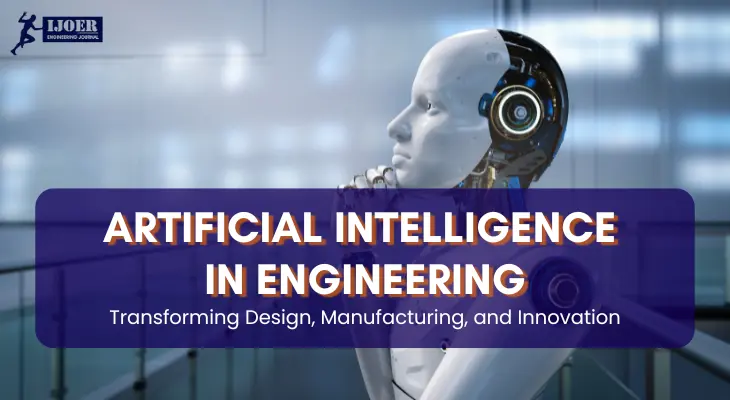
Artificial Intelligence (AI) is transforming engineering by making design, manufacturing, and problem-solving more efficient and innovative. AI-powered tools help engineers develop smarter solutions, automate tasks, and improve accuracy. This blog explores how AI is shaping the future of engineering, its applications, benefits, challenges, and how researchers can leverage it for groundbreaking advancements.
AI is redefining engineering design by enhancing precision, efficiency, and creativity. Some key advancements include:
AI is streamlining product development and manufacturing, making processes faster, safer, and more cost-effective.
Robotics powered by AI is revolutionizing various engineering sectors:
AI is improving infrastructure development and maintenance in civil engineering.
Despite AI’s benefits, there are challenges to address:
The future of AI in engineering looks promising, with advancements in sustainable materials, energy efficiency, and autonomous systems. Engineers embracing AI will lead innovation in various fields, from space exploration to biomedical advancements.
The International Journal of Engineering Research (IJOER) provides a platform for engineers and researchers to publish AI-driven innovations. Here’s how IJOER can help:
If you are researching AI applications in engineering, consider submitting your paper to IJOER to contribute to the evolving landscape of technology-driven innovations.
AI is revolutionizing engineering, driving efficiency, enhancing safety, and enabling sustainable innovations. From smart design tools to autonomous robotics, AI is shaping the future of engineering across multiple disciplines. While challenges exist, embracing AI is essential for engineers to stay ahead in the evolving technological landscape.
Ques. 1: How is AI used in engineering?
Ans: AI is used for design automation, predictive maintenance, robotics, smart manufacturing, and infrastructure management to improve efficiency and innovation.
Ques. 2: What are the biggest challenges of AI in engineering?
Ans: Challenges include high costs, data security risks, the need for AI-trained engineers, and ethical concerns related to AI decision-making.
Ques. 3: Which engineering fields benefit the most from AI?
Ans: Mechanical, electrical, civil, and aerospace engineering see significant AI-driven advancements in automation, design, and predictive analytics.
Ques. 4: How can AI improve product design?
Ans: AI-powered generative design and simulation tools help engineers optimize product performance, reduce material waste, and speed up innovation.
Ques. 5: How can IJOER support my AI research in engineering?
Ans: IJOER provides a peer-reviewed platform for publishing AI-related engineering research, ensuring global visibility and academic recognition.
Are you exploring AI in your engineering research? Consider publishing with IJOER to contribute to the future of AI-driven innovations!

|
Citation Indices
|
All
|
Since 2020
|
Citation |
2359 |
1680 |
h-index |
19 |
15 |
i10-index |
57 |
24 |
|
Acceptance Rate (By Year)
|
|
|
Year
|
Percentage
|
|
2023
|
9.64%
|
|
2027
|
17.64%
|
|
2022
|
13.14%
|
|
2021
|
14.26%
|
|
2020
|
11.8%
|
|
2019
|
16.3%
|
|
2018
|
18.65%
|
|
2017
|
15.9%
|
|
2016
|
20.9%
|
|
2015
|
22.5%
|